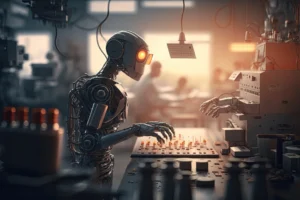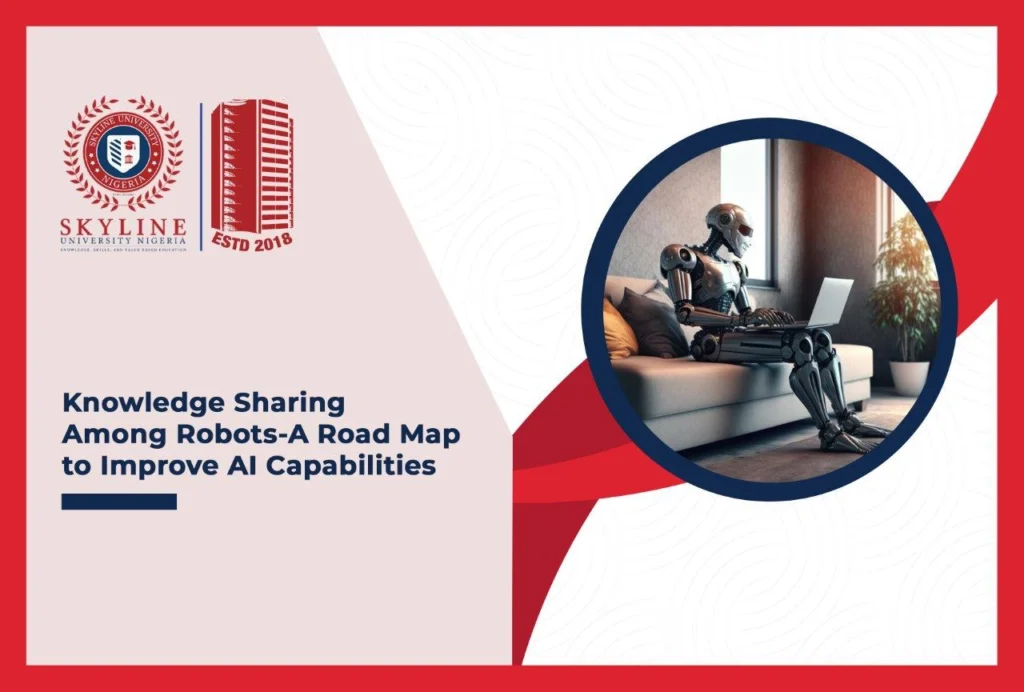Introduction
A robot is a type of automated machine that can carry out particular activities quickly and accurately with little to no human involvement. In the past 50 years, there has been a significant advancement in the subject of robotics, which deals with the design, engineering, and operation of robots. If a company had a central database of information that all staff members could access, that would be an example of knowledge sharing. Best practices, lessons learned from prior projects, or even just helpful hints and advice could be included in this.
Although Programmeming conveys explicit knowledge from a human to a robot, a critical aspect of knowledge is lost in the process, making the knowledge no longer regarded as “knowledge.” There is nothing but human-Programmemed information. Only one of them is Knowledge Sharing among Robots.
How do robots communicate with one another through a knowledge base like Robot Google? Two knowledge modifications, in our opinion, can be useful. The first transformation occurs in robots when information is changed from the robot’s internal representations, which are likely only known to itself, to a form that is understandable to other parties, i.e., Robot Google and other robots.
The knowledge that is represented in the format created by the first transformation is turned into a representation that can be effectively indexed in Robot Google as part of the second transformation. When Robot Google can successfully respond to questions from other robots, knowledge is shared.

Among robots, knowledge sharing entails the dissemination of knowledge, data, or experiences from;
Communication Protocols
Robots can share information using established communication protocols, such as MQTT (Message Queuing Telemetry Transport) or ROS (Robot Operating System). These protocols allow robots to publish and subscribe to topics, exchanging data and knowledge.
Centralized Knowledge Repository
Establishing a centralized repository where robots can upload, access, and update knowledge .This can include databases, cloud storage, or decentralized ledgers where robots contribute and extract information.
Machine Learning and AI Algorithms
Utilizing machine learning models and AI algorithms to process and analyze data, extract patterns, and learn from the experiences of other robots. The insights gained can be shared among robots to enhance their learning and decision-making processes.
Collaborative Learning
Encouraging robots to collaborate on tasks and learn from each other’s actions and strategies. This collaborative approach allows robots to share insights and knowledge in real-time, leading to more efficient problem-solving.
Natural Language Processing (NLP)
Incorporating NLP techniques to enable robots to extract knowledge from text, enabling them to read and understand manuals, research papers, or other relevant documents to enhance their capabilities.
Experience Replay
Allowing robots to store and replay their experiences, enabling other robots to learn from these experiences without having to go through the same process again. This can be akin to how humans share and learn from stories and narratives.
Human-Robot Interaction
Facilitating knowledge sharing through interaction with humans. Robots can learn from humans and collaborate with them, extracting knowledge from verbal communication, demonstrations, or shared visual information.
Effective knowledge sharing among robots requires a balance between data security, privacy, standardization, and collaborative learning, ensuring that robots can collectively improve their performance while respecting ethical and privacy considerations.
Potential Impact of Knowledge sharing among robots has far-reaching implications across various domains:
Enhanced Learning and Adaptability
Robots can learn from a collective pool of experiences, improving their ability to adapt to new and challenging environments.
Efficient Problem Solving
The collective intelligence of robots allows for more efficient and effective problem-solving, leading to quicker and better outcomes.
Optimized Resource Utilization
Shared knowledge enables robots to optimize resource usage and avoid redundant efforts, ultimately increasing efficiency and cost-effectiveness.
Broader Application Scope
Knowledge sharing expands the range of tasks and applications robots can undertake, making them more versatile and valuable in diverse scenarios.
Conclusion
Knowledge sharing among robots is a pivotal step towards creating more intelligent and capable robotic systems. As advancements continue, we can expect to see robots collaborating, learning, and evolving in ways that were previously unimaginable, propelling the field of robotics into a new era of innovation and functionality.
References

https://users.cs.utah.edu/~tch/CS5350/resources/sample_paper/RobotGoogle.pdf
- https://link.springer.com/article/10.1007/s12369-023-01034-9
- https://www.sciencedirect.com/science/article/abs/pii/S0893608010001188
- https://www.atlantis-press.com/proceedings/iccia-19/125913157
- https://sciendo.com/article/10.1515/aucts-2017-0018

